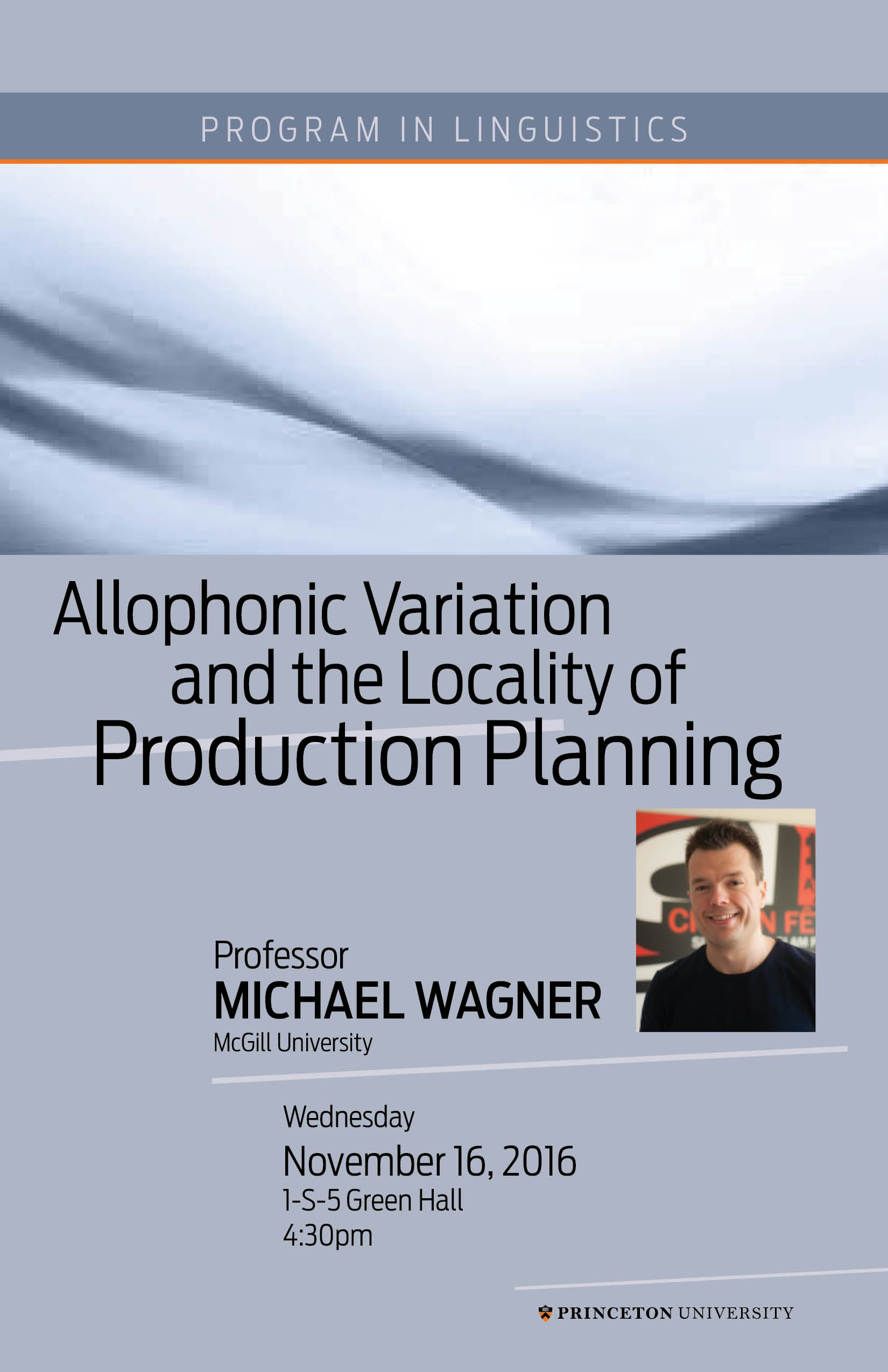
Allophonic Variation and the Locality of Production Planning
Michael Wagner, McGill U
November 16, 2016 · 4:30 pm · 1-S-5 Green Hall
Linguistics

The application of allophonic processes across word boundaries (processes such as flapping (cf. De Jong, 1998; Patterson and Connine, 2001) and sibilant assimilation (cf. Holst and Nolan, 1995) in English, or liaison in French (Durand and Lyche, 2008)) is known to be subject to locality conditions. The same processes are also known to be variable. While a correlation between the locality of cross word processes on the one hand and their inherent variability is often observed (e.g. Kaisse, 1985), existing theories of either aspect usually do not make any predictions about the other. In this paper we report on several projects that pursue the hypothesis that the locality and variability of cross-word allophonic processes are tightly linked, and can be both be understood as a consequence of the locality of production planning.
The basic idea is that flapping, sibilant assimilation, liaison and related processes are sensitive to the segmental environment in a following word, but the following segmental environment can only exert its effect of the relevant information is already available when the phonetic detail of the current word is being planned. Under this view, effects of syntax and prosody on the application of these processes are reducible to their indirect effects on production planning: For example, a speaker is less likely to plan ahead across a sentence boundary, and less likely to plan ahead across a prosodic juncture. This hypothesis makes specific predictions that all factors affecting planning should affect the likelihood of cross-word allophonic processes (such as the predictability of the following word, the # syllables of the following word, etc.). We report evidence from several experimental and corpus studies that test our hypothesis, which makes different predictions than accounts that tie allophonic processes to particular phonological domains. It also makes different predictions than accounts that try to explain sandhi processes as an effect of gestural overlap, or than currently popular accounts in terms of probabilistic reduction.
An account of the the locality of sandhi processes in terms of the locality of production planning removes some of the motivation for categorically distinct phonological domains as they are assumed in the theory of the prosodic hierarchy. It also makes new predictions about what types of processes will necessarily have to be local and variable, and also about the degree of locality/variability depending on which information their application relies on.












